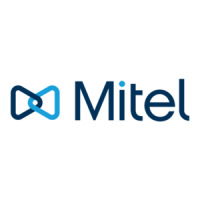2.04 The IPC (Integrated Processor Control) contains all operating
software in the form of PROM and RAM and the microprocessor
There is 160 kbytes of PROM and 48 kbytes of RAM. Of the 48
kbytes of RAM, 34 kbytes are write-protected and the remaining 14
kbytes are not write-protected. All customer memory is protected
from power failure by a card-mounted battery pack When an IPC is
shipped, the batteries are turned off (see
Set
:tion
MITL9105/9
350-NA).
The batteries must be turned on
programmed. The actual Generic information
and is non-volatile (see Figure Z-2).
2.05 There is a RAM Load button that will
from a recording device. This card also contains a LED that will
be lit to indicate that the RAM batteries are charging. In addition to the
RAM batteries LED, there are three other
LEDs:
SECTION
MITL91
OS/91
!-
2.03 Both the SX-100 and SX-200 systems employ a minimum
ber of cards in the card shelf (Figure 2-2 and Figures 2-3(a) and
(b)). These cards may be used in either system, minimizing stocking
and control problems for field maintenance.
IPC Card
1.
The top LED, when flashing, indicates that the automatic diag-
nostics are running. The LED will not flash (the diagnostics do
not run) when the system is in Programming Mode, or when
less than four speech paths are idle. Under these circumstances
the LED may be on or off; its state has no special meaning.
2.
The second LED, when lit, indicates that the system is in the
The third LED, when lit, indicates that the RS-232 port is in use.
The fourth LED if supplied, when lit, indicates that the system is
functioning normally.
Scanner Card
2.06
The Scanner card (Figure 2-2) contains a 2-digit display which
is used to display faulty card positions. It may be used in
conjunction with the test line to display the status of selected circuits
and to support the customer data Load and Dump. The 2-digit display
is read from top to bottom. If a card is malfunctioning, the display will
show the position number of the faulty card (01-22 for equipment
shelf 1, and 31-42 for the SX-200 equipment shelf 2).
2.07
When used in conjunction with the test line, the display shows
the status of the receiver and/or the speech path which has
been selected. The top display shows the receiver status and the
bottom display shows the speech path status. The customer data can
be dumped or loaded in blocks. The displays used are shown in Table
2-l. This card also contains the night bells and night service relays.

